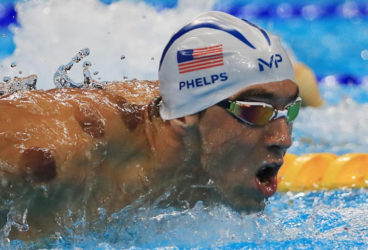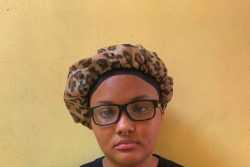NEW YORK, (Reuters) – It wasn’t just Michael Phelps’ big win on Sunday that had people talking about the U.S. swimming star. It was also the dark purple circles on his shoulders.
Phelps, who won the 19th Olympic gold medal of his career on Sunday and helped the U.S. men’s team to victory in the 4×100 meters freestyle relay, is one of a number of Olympic athletes practicing “cupping,” an ancient Chinese healing practice.

During the therapy cups are placed on the section of the body in need of repair to create suction. The method is said to draw out any toxins, mobilize blood flow, soothe sore muscles and even help cure insomnia.
“I have done it for awhile but I haven’t had bad ones (marks) like this awhile though,” Phelps, who in 2015 posted an Instagram photo of himself receiving the therapy, told reporters on Monday.
“That’s where I hurt the most,” he said of the marks on his shoulder. “I have done it before pretty much every meet I go to. I just asked for a little cupping yesterday because I was sore.”
The 31-year-old, raising a roar from the crowd on his first competitive appearance at his fifth Games after sitting out the heats, now has an unprecedented 23 medals with two silvers and two bronzes filling out his tally.
On Monday, there were nearly 300 posts per minute mentioning Phelps on Twitter, according to social media analytics firm Zoomph.
U.S. gymnast Alex Naddour, 25, and Belarusian swimmer Pavel Sankovich are also fans of the procedure. Naddour posted a selfie with a big cupping mark on his shoulder last week, while Sankovich, 26, posted a photo on Instagram in June saying, “This kinda Saturday morning. Cupping is a great recovery tool.”
Actresses Gwyneth Paltrow, Jennifer Aniston and pop star Justin Bieber have also been photographed with the distinctive large circles on their backs and chest.
However, while the therapy dates back to ancient Egyptian, Chinese, and Middle Eastern cultures, it has been less popular among more skeptical Western medical societies.
“There is no scientific rationale for expecting any health benefit from cupping,” the American Cancer Society said in a statement on Monday.
However, Jessica MacLean, acting director of the International Cupping Therapy Association, said she has seen a 20 percent increase in purchases of cupping therapy equipment and a 50 percent increase of healthcare practitioners seeking out their cupping certificates over the last three days.
MacLean, who receives cupping therapy daily and has been performing the procedure on people for 24 years, said she saw a similar trend after the “The Karate Kid” movie was released in 2010, which featured the therapy briefly.
“Every time we see something like this happen in the media, it piques people’s attention,” said MacLean. “When people get the treatment and they recover really fast, they don’t care about the scientific evidence – they just care that it works.”








